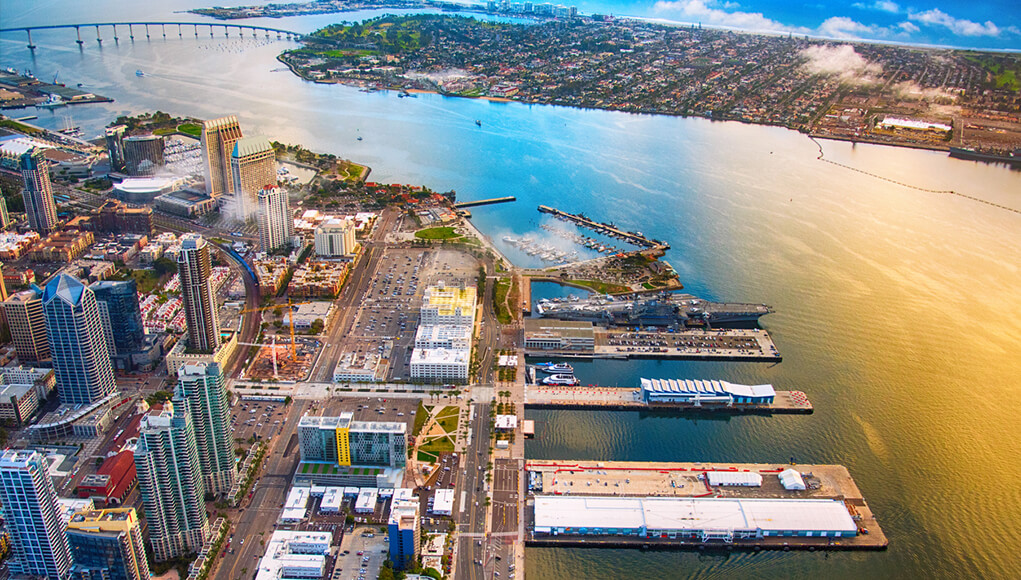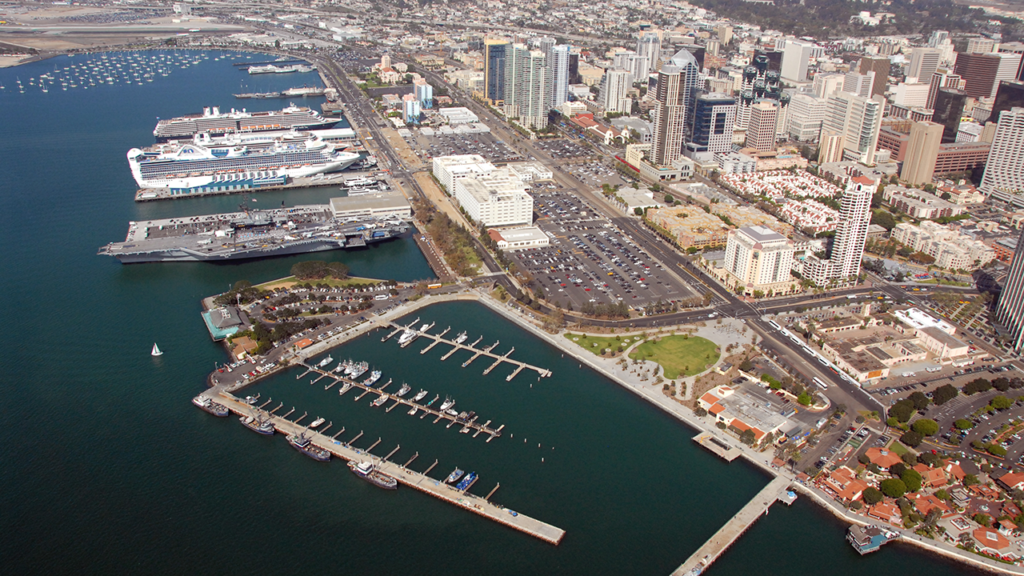Going Green is a big fan of utilizing renewable energy, and one of the best available resources for clean energy is the ocean. We sat down with Renée Yarmy, LEED AP O+M, Program Manager, Energy & Sustainability, Energy at the Port of San Diego, to learn more about what the port of San Diego is doing to be as sustainable and environmentally friendly as possible and her vision for the Program Manager, Energy & Sustainability, Energy at the Port of San Diego and her vision for the electrification of transportation in the port.

Tell us about your Company and Background.
The Port of San Diego manages San Diego Bay and 34 miles of its beautiful, natural waterfront for the people of California. The Port was established in 1962 under the Port Act and is charged with implementing the Tidelands Trust Doctrine. For over fifty years, the Port’s five member cities – Chula Vista, Coronado, Imperial Beach, National City and San Diego – have worked together to develop and promote commerce, navigation, recreation and fisheries on and around San Diego Bay. Self-funded, the Port contributes billions annually to San Diego’s economy, benefiting the community, local businesses and employees. Businesses at the Port provide thousands of well-paying jobs, supporting individuals and families throughout the region. Each year, millions of people enjoy a remarkable way of life offered by San Diego Bay and its waterfront communities.
The Port is an environmental champion of San Diego Bay and our surrounding communities – it’s important to us to ensure the bay remains a vibrant resource and contributes to a remarkable way of life for visitors and residents. In December 2013, the Port was one of the first ports to adopt a Climate Action Plan (CAP). Our CAP establishes goals to reduce greenhouse gas (GHG) emissions 10 percent by 2020, which we exceeded with a 13% reduction as assessed in 2016, and 25 percent by 2035. In addition, we are currently updating our Climate Action Plan (CAP) goals to align with state of California targets for 2030 (40%) and 2050 (80%) GHG emissions reductions. Each year, the Port sets and measures environmental goals to ensure that San Diego Bay remains a vibrant resource for visitors and residents. Investing in and doing what we can to advance clean energy technology is a win-win – a win for our industrial tenants whose employees will have cleaner air to breathe while they work, and a win for the residents in our portside communities who will also have cleaner air to breathe where they live.

What trends are you seeing in Renewable Energy and Clean Tech?
At the Port, we are seeing a shift toward the electrification of transportation beyond passenger vehicles and into the Freight Electrification sector. More research is needed in this field to understand how this transition will impact energy loads and demand as the transportation options change. In addition, there is a lot of interest in hydrogen fuel cells and if this is an option for the goods movement industry. The current electric vehicle market and available technologies for freight vehicles isn’t enough to support the transport distance and weight to move heavy cargo loads.
We are also seeing a greater need for energy storage, energy resiliency, and large scale solar energy to support this transition toward electrification. The Port of San Diego is one of the only 17 commercial U.S. Strategic Ports designated to support cargo and vessel operations for the U.S. military’s Transportation Command and Military Sealift Command. The Port is implementing microgrid at the Tenth Avenue Marine Terminal (TAMT) with the help of $4.8M in grant funding from the California Energy Commission. This project advances the Port’s use of renewable energy, reducing GHG emissions on and around the terminal, progresses our CAP goals, and provides a reliable energy source for the Port’s terminal operations. The microgrid will increase the terminal’s readiness and provide islanding capabilities allowing critical port infrastructure to remain operational through grid outages, supply critical jet fuel to the San Diego International Airport, and provide emergency goods and services to nearby disadvantaged communities in the event of natural or human-caused disasters that impact an electric grid.
The microgrid project components include the installation of energy efficient site lighting which include converting high-mast high pressure sodium lights to LED technologies; integrating a 700-kilowatt/2,400 kilowatt hour lithium-ion battery energy storage system; and installing a 700-kilowatt rooftop solar PV array. ?In addition, this project investment promotes improved regional air quality as the Port continues to electrify the terminal.
This investment allows the Port to provide technological advancement and breakthroughs to achieve the state’s energy goals. With the installation of the microgrid, the Port is able to participate in demand response and peak shaving through the use of renewable energy and stored energy, further saving the Port money through reduced electricity costs. More advanced technology projects like the microgrid will play a role into the future
Where do you see the industry five years from now?
At the Port, one observation we have is that much of the Port electrical infrastructure is aged, often dating back to the early years of the Port (over 50 to 70 years). To support new technologies in the renewable energy, advanced technology, and electrification space, investment in the modernization of the electrical distribution system will be necessary to support energy load growth and demand. I believe a lot of attention in the next five years will be focused “underground,” if you will, to prepare the infrastructure to accept these clean / zero emissions technologies.
The regulatory environment which governs freight is shifting requirements as well toward zero emission vehicles and freight equipment within California ports. The Port’s role over the next five years will focus on developing the internal processes and external policies?to advance zero emission operations and preparing the infrastructure to support this transition. These efforts will ultimately lead to drastic GHG and criteria air pollutant reductions.
This transition includes, for example, installing electric charging and shore power infrastructure on our terminals, planning for the transition of the Port’s fleet to alternative fueled vehicles, continuing progress on energy efficiency and renewable energy projects, installation of public electric vehicle charging infrastructure, and continued collaboration with Port tenants on promoting sustainable business operations through the Port’s Green Business Network program.

What is a fun fact about you?
I began my career in architecture in 2003 and thought my career would path was already set. Little did I know that my graduate degree in sustainable development would lead me to implementing the Climate Action Plan for the Port of San Diego. As a native San Diegan, I am happy to contribute to the betterment of my city. In my free time I like to find ways to feel like a kid again, whether it is through art classes or roller skating.
Renee, thank you for taking the time to share your vision for Electrification of Transportation in the Port of San Diego with Going Green.
Going Green, hosted by Dylan Welch, interviews leading experts in cleantech, sustainability, media, finance, and real estate on the Going Green podcast. Tune in and subscribe to the podcast on Apple or Spotify to listen to interviews with leading cleantech and sustainable experts.




